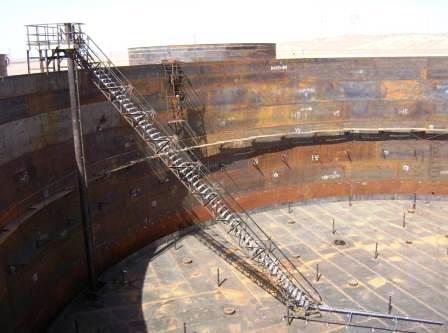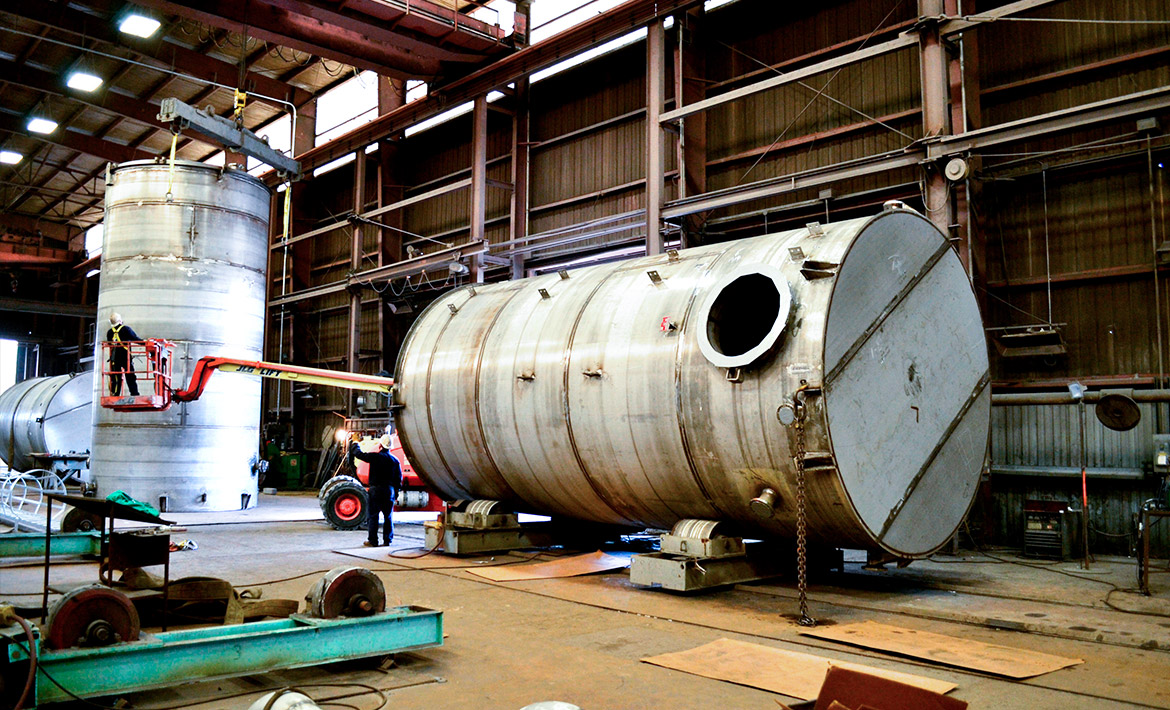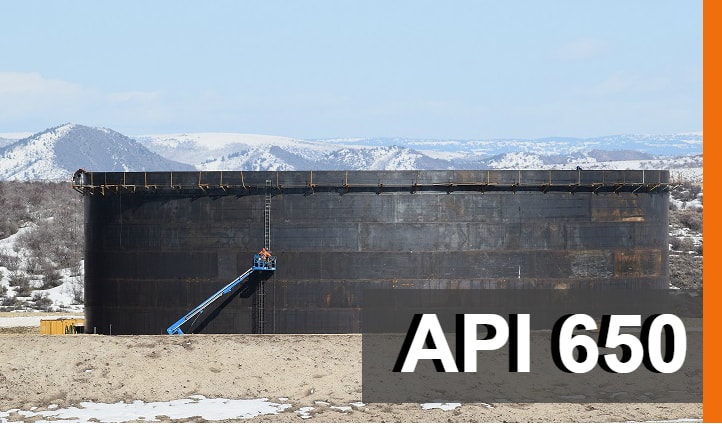API 650 Welding Inspection and Its Impact on Manufacturing Efficiency
Just How Welding Examination Functions: A Comprehensive Overview for Professionals
Welding inspection plays an important function in guaranteeing the safety and integrity of welded frameworks. It entails an organized technique that consists of both aesthetic evaluation and advanced testing methods. Specialists need to acquaint themselves with essential standards and laws controling the industry. Comprehending the common issues that can occur during welding is necessary. This guide will certainly discover these elements thoroughly, supplying insights right into the processes that support top quality and stability in welding.
Recognizing the Importance of Welding Examination
While numerous may ignore the relevance of welding evaluation, it plays an essential function in making certain the integrity and security of bonded structures. Reliable welding assessment identifies possible flaws and problems that can compromise structural stamina and result in tragic failures. The examination process incorporates numerous strategies, such as aesthetic exams, ultrasonic testing, and radiographic analyses, each adding to the overall examination of weld top quality.
In addition to securing the structural honesty, welding evaluation guarantees conformity with market standards and client specs. By making certain that welds meet required tolerances and characteristics, inspections aid keep the integrity and longevity of elements in various applications, from construction to aerospace. A rigorous examination procedure fosters a culture of high quality and responsibility among producers and welders. Ultimately, welding assessment is not merely a procedural step; it is a critical practice that underpins the safety and performance of crafted systems across diverse markets.
Trick Specifications and Regulations in Welding Inspection
The foundation of reliable welding inspection hinges on adherence to established laws and standards. Various companies, such as the American Welding Culture (AWS) and the American National Requirement Institute (ANSI), set forth guidelines that guarantee high quality and safety in welding techniques. Secret criteria, such as AWS D1.1 for architectural welding and ASME Section IX for stress vessels, supply complete requirements for welding procedures, assessments, and credentials. Regulatory structures, including those from the Occupational Security and Wellness Management (OSHA), mandate safety techniques and worker securities in welding atmospheres. Compliance with these criteria is vital for achieving regular weld high quality and reducing the danger of failures. In addition, international criteria like ISO 3834 additionally enhance international consistency in welding evaluation techniques. Professionals have to remain notified concerning these policies to assure that their evaluation techniques straighten with sector assumptions and legal requirements, consequently safeguarding both employees and architectural honesty.
Preliminary Preparation and Visual Evaluation Techniques

Effective welding evaluation begins with a complete pre-inspection list that assures all necessary conditions are fulfilled before the actual evaluation occurs. Following this prep work, aesthetic flaw identification plays a crucial function in assessing weld top quality, allowing inspectors to spot problems such as cracks or inappropriate fusion. Together, these methods form the foundation for a successful welding evaluation procedure.
Pre-Inspection List
Prior to commencing any kind of welding assessment, a thorough pre-inspection list is necessary to ensure that all needed preparations are completed and that visual inspection methods are efficiently employed. Crucial element of this checklist consist of confirming the welding treatment requirements (WPS), making certain all equipment is calibrated and in good functioning condition, and validating that the assessor possesses the required qualifications. Additionally, it is important to assess any previous examination records and to examine the workplace for security risks. The examiner ought to also confirm that all appropriate paperwork, such as product certifications and assessment documents, is conveniently available. Completing this checklist aids to develop a solid foundation for a successful examination procedure, boosting the reliability of the outcomes obtained.
Aesthetic Defect Identification
A successful aesthetic defect identification process starts with mindful first prep work and the application of well established visual examination methods. Inspectors should guarantee that the welding area is clean and well-lit, as sufficient presence is necessary for detecting problems. A detailed assessment of the weld joint's surface area permits the recognition of suspensions, such as fractures, undercuts, or porosity. Inspectors commonly use tools like amplifying glasses or mirrors to enhance their sight of hard-to-reach areas. In addition, they must recognize with the certain welding standards and standards relevant to the task. By adhering to these techniques, assessors can successfully determine prospective issues, securing the integrity of the weld and compliance with market standards.
Non-Destructive Testing Techniques: A Summary
Non-destructive screening (NDT) approaches play a vital function in the welding evaluation process by making sure the integrity and reliability of bonded frameworks without triggering any damage (API 650 Welding Inspection). These techniques enable examiners to assess the high quality of welds while maintaining the components being checked out. Typical NDT methods consist of ultrasonic testing, radiographic screening, magnetic particle screening, view publisher site and dye penetrant testing, each offering special advantages
Ultrasonic testing uses high-frequency audio waves to identify inner problems, while radiographic testing utilizes X-rays or gamma rays to picture the internal structure of welds. Magnetic particle testing reveals surface area and near-surface defects by applying a magnetic field and iron fragments to the weld location. Color penetrant screening highlights surface-breaking imperfections through the application of a colored dye. With each other, these NDT approaches offer important understandings right into weld top quality, allowing professionals to make enlightened decisions relating to security and conformity in welding applications.
Common Defects and Their Implications
Recognizing common issues in bonded joints is vital for preserving structural integrity and safety. Different issues can click now occur during the welding process, each carrying potential implications for the overall performance of the structure. Porosity, defined by little gas pockets within the weld, can damage the joint and compromise its load-bearing capacity. Fractures may establish due to thermal tension or inappropriate cooling, causing possible failure under tension. Incomplete combination takes place when the weld steel does not fully bond with the base material, resulting in weak joints that might not stand up to desired loads. Damaging, where the base metal is worn down, can additionally decrease the effective cross-section of the weld. Additionally, extreme reinforcement can create tension focus that might cause failure. Acknowledging these flaws promptly permits for corrective actions, making certain the durability and integrity of welded structures in essential applications.
Tools and Devices Utilized in Welding Examination
Efficient welding examination counts on a variety of specialized devices and tools to guarantee the quality and integrity of bonded joints. Vital tools consist of aesthetic inspection tools, such as multiplying glasses and borescopes, which allow assessors to closely examine welds for surface area defects. Non-destructive testing (NDT) approaches, such as ultrasonic screening, radiographic screening, and magnetic bit screening, are fundamental for identifying internal imperfections without damaging the product.
Measurement devices, consisting of calipers and weld assesses, assist examine measurements and identify compliance with specifications. Furthermore, firmness testers assess the mechanical residential or commercial properties of bonded joints. Individual safety tools (PPE) is likewise imperative, securing the safety and security of examiners while operating in possibly unsafe environments (API 650 Welding Inspection). Each device offers a particular purpose, jointly improving the efficiency of welding examination and contributing to the reliability of finished projects
Often Asked Inquiries
What Certifications Are Needed to End Up Being a Welding Assessor?
To end up being a welding examiner, people usually need pertinent certifications, such as AWS CWI or CSWIP, together with experience in welding procedures, engineering concepts, and knowledge of inspection strategies, safety criteria, and relevant codes.
How Usually Should Welding Inspections Be Performed?
Welding assessments should be conducted on a regular basis, ideally at different job stages, consisting of pre-weld, during-weld, and post-weld. Regularity may also depend on industry standards, job specifications, and the complexity of the welds entailed.
Can Welding Defects Be Repaired After Inspection?

Yes, welding flaws can commonly be repaired after evaluation. Depending upon the intensity this article and sort of issue, ideal methods such as revamping or extra welding may be used to restore structural stability and security conformity.
What Industries Require Regular Welding Inspections?

Various markets, including construction, production, aerospace, and vehicle, require normal welding examinations - API 650 Welding Inspection. These assessments ensure adherence to security requirements and high quality control, decreasing risks connected with architectural integrity and functional performance in welded elements
How Do I Select a Welding Assessment Solution?
To pick a welding inspection solution, one should take into consideration certifications, experience, certifications, and sector track record. Furthermore, examining client reviews and assuring the solution satisfies appropriate requirements can aid ensure top quality evaluations and dependable outcomes.

While many may underestimate the value of welding assessment, it plays a crucial function in guaranteeing the stability and security of welded structures. Trick requirements, such as AWS D1.1 for architectural welding and ASME Section IX for stress vessels, offer thorough requirements for welding qualifications, assessments, and procedures. Efficient welding examination starts with a comprehensive pre-inspection list that assures all needed problems are met prior to the real evaluation takes location. Prior to starting any type of welding evaluation, a thorough pre-inspection list is crucial to ensure that all needed prep work are finished and that aesthetic assessment strategies are effectively employed. Non-destructive testing (NDT) approaches play an essential function in the welding examination procedure by making sure the stability and dependability of welded frameworks without triggering any damage.